Couples Ultralight Backpacking Gear
Best 2-Person Gear & Tips for a Great Trip
Most people hike in pairs which is why created this couples ultralight backpacking gear overview. Even if you start out on a long-distance hike on your own, chances are you’ll wind up hiking with someone else. Whether it’s a backpacking partner or a romantic partner, most people head out backpacking with someone else. Despite this, most backpacking gear lists are set up for one person, not as a couple’s backpacking gear list, which ignores the many advantages of shared gear and the joys of hiking as a couple, or even as a pair of friends!
Robust 3-Season Kit | Tested & Refined for Almost Two Decades
The gear in this list reflects our shared backpacking kit which has been refined and tested for almost two decades backpacking, climbing, mountaineering, and canyoneering together in some very challenging places — Patagonia, Alaska north of the Arctic Circle, the Southwest Deserts and Canyons, High Sierras, Rockies, etc. It is a robust and safe kit up to 3 season conditions most anywhere!
The Advantages Couples Ultralight Backpacking Gear
Less weight for each of you. More camaraderie.
Almost all gear talk and gear lists are based on solo kits, which seems backward considering there are many advantages to sharing gear. When we talk about hiking as a pair, we’ll focus on both couples hiking as well as general backpacking partners, family members, and friends. There’s no right way to split gear or hike as a pair, so chances are you’ll come up with your own trial-and-error system based on a combination of our suggestions and figuring out on your own what works ideally for your couples ultralight backpacking gear strategy.
Video Breakdown of our Couples Gear in the High Sierra
If a picture is worth a 1,000 words what is a comprehensive field video of our gear in action worth? There’s stuff in here that we can’t begin to cover in words.
Beyond Weight Savings
Traveling together is a partnership
Beyond the weight savings and convenience of sharing backpacking gear, the benefits of hiking with a partner bring a sense of teamwork to the adventure. The bonding and camaraderie between hiking partners is a benefit to hiking with someone else that you can’t assign a weight value to. Having a partner means you can rely on someone in the backcountry for a second opinion with navigation, to swap snacks with if your food is unappealing, and to filter water while you set up the shelter. Splitting camp chores, sharing every experience from crystalline alpine lakes to hail storms at 10,000 feet brings another level of bonding to the relationship that you just can’t get from sitting at home together.
Basic Overview for Couples Ultralight Backpacking Gear
When you hike with a backpacking partner or significant other, you’ll be sharing some items—likely at least a cookset and 2-person tent — and carrying two of others. Each person carries their own pack, food, water, and often their own water treatment. There’s also the option for a shared sleep system for extra weight savings, depending on the couple. There are plenty of ways to make a two-person system more efficient, from sharing the cookset to splitting the tent weight, and more.
Tips & Tricks for Hiking with a Partner
Far more important than couples ultralight backpacking gear we give you some tips (suggestions really) that will make the hike with your partner the best it can be. And these were learned by literally decades of success and joys, and some very tough moments on the trail.
- Set a mileage plan for the day/trip
- Agreed-upon pacing is key for happiness!
- Check-in with each other and be flexible
- Split up the camp chores
- Having two set of smaller items is like an insurance policy
- Finally and most important RULE #1 | To keep the joy in our backcountry travel we have one simple rule, “If either of us is not having fun, we stop and make a new plan.” Each of us has the unilateral right to invoke it; each of us has trust in the other to know that the request will be gracefully honored. This rule has stood the test of time. Nobody is in charge and nobody abdicates responsibility. Backpacking is a joint effort that requires flexible and synchronized input from both of us. If one of us is having a slow day, doesn’t want to do that class 3, 13,000 ft col, or maybe one of us wants to bag an unplanned summit; or possibly we just need a day to swim, fish and relax — we stop what we are doing and come up with a new plan. Without exception, the new plan is much better than what we were doing before. Not every trip is what we expected from the start, but each trip ends up being the best trip we could have.
Couples Ultralight Backpacking Gear: Tents
When considering couples ultralight backpacking gear, the a tent is the biggest weight saver for a pair of hikers. Break the tent down by splitting it into components, and having each person carry different pieces and you could save a couple of pounds per person.
2-Person Tent Considerations
There are a few major considerations when looking for a 2-person tent. Consider dual entrances, your own vestibules for storage, and the amount of livable space (shoulder space, headspace, foot space) you’ll be sharing with someone for extended periods of time. Lighter options include the Zpacks DupleXL. See all of our picks for two-person lightweight backpacking tents.
Some hikers on our staff carry the Big Agnes Copper Spur HV UL2 Tent or (Big Agnes Tiger Wall UL2 | 2-Person Tent). One partner carries the tent body, poles, and stakes, and the other carries the fly. [The other option is for one person to carry the whole tent, and the partner carries some “group gear” that has an equivalent weight — either way works!]
The Tiger Wall 2 might be on the lightweight end of things for a freestanding tent, but it’s not as light as the Trekking Pole Supported Tents other folks carry which can be a smidge over 1 pound for two people! The Tiger Wall has two doors and two vestibules to easily each stash gear and not run out of room, as well as having separate entrances to avoid crawling all over each other trying to get in and out. Having the 29 square feet of the Tiger Wall and the two 8 square foot vestibules feel like a luxury. This tent has plenty of head and shoulder room as well, something to consider when your partner is much taller than you. And it is double-walled which helps with condensation in wet and humid conditions.
Trekking Pole Supported Tents
Many of the Trekking Pole Supported Tents lack many of these features. Most are not double-walled, some only have a single door, and lacking a full pole-set for freestanding setup, they require more user skill to pitch and use. That being said, tents like the REI Co-op Flash Air 2 Tent and Zpacks DupleXL are worth a serious look. With a bit of skill on your part, you can save a ton of weight!
Big Agnes Copper Spur HV UL2 Tent
Big Agnes Copper Spur HV UL 2
43 oz | $530
If you want the best overall freestanding backpacking tent that money can buy, choose the Big Agnes Copper Spur HV UL2. Compared to similar freestanding models, it’s taller, lighter, better ventilated, and more livable. This is the backpacking tent we’d want to hang out in on a rainy day because the innovative awning system adds ventilation, and the near-vertical sidewalls and fully lofted ceiling provide excellent headroom for sitting up. The Copper Spur is sturdy, lightweight, and fully featured. This tent does it all and does it all extremely well. Read more in our full-length Big Agnes Copper Spur Review.
Zpacks DupleXL Tent
Zpacks DupleXL
20.8 oz | $719
While many similar trekking pole shelters exist, we believe that Zpacks DupleXL is the best overall ultralight backpacking tent design, and a big upgrade over the original Duplex. Constructed with high end, durable, ultralight, waterproof, zero-stretch Dyneema, it rebuffs the weather without sagging and offers a very sturdy dual apex pitch. Compared to its predecessor, the XL boost is a couple ounces heavier for an additional 6″ inch of length to accommodate taller campers. But anyone can appreciate the extra space for gear storage. Read more in our full-length Zpacks DupleXL review.
Other Shelter Options
Solo Tents
Some pairs of hikers in the “friend” realm prefer to have their own sleeping haven, rather than committing to couples ultralight backpacking gear. If that’s so, they might each prefer to have their own lightweight solo tent. And you’ll still have the option to share other gear like cooksets with your hiking partner. While we recommend the DupleXL for pairs, we prefer the Zpacks Duplex for going solo. It weighs only 18 oz.
Need More Room for 2? Consider a 3-Person Tent
When I hiked the AT with a partner, we opted for a three-person tent. While the weight penalty was five ounces more per person, we really appreciated the amount of space offered during a five-month hike. A few years later—and many gear pounds lighter—I would certainly opt for the weight savings of a good 2-person tent over the additional space (and weight) of a 3-person tent, but at the time, the luxury of that much livable space felt nice. Lighter three-person options include the ZPacks Triplex, the Big Agnes Copper Spur HVUL3, or Big Agnes Tiger Wall UL3 Tent.
Couples Ultralight Backpacking Gear: Cook Set
This is another no-brainer for sharing. Having two people carrying the cook-set means someone can carry the fuel, and someone else can carry the stove and pot. If you want to save time, grab a cookset with a larger capacity so you can boil two or more cups of water at a time for coffee and dehydrated meals. That’s why we love pots in the range of 1.0 to 1.3 liters for 2-person cooking. See below for our choices.
Finally, there is less work in camp because one person can easily make dinner or coffee for two, while the other person can do other camp chores like collecting water or setting up the shelter.
Our preferred cook set is the Jetboil STASH Stove, which packs into itself entirely. While its pieces can’t be shared in the traditional sense without disrupting the nested packaging, simply give one person the STASH and an equal weight amount of items for the other to carry.
Budget Shared & Solo Cooksets
- Best Stove: Jetboil Stash Stove. A fully integrated, ultralight stove system with pot included. Weighs only 7.1 oz and has incredible packability and fuel efficiency.
- Value Stove | $60 MSR PocketRocket 2 (tried and true standard) or the $19 BRS 3000T Titanium Stove Both are light & functional, although not as wind resistant as the above options.
- Value Pot | TOAKS 900 m Wide Titanium Potl (or TOAKS 1350 ml Pot)
Solo Cook Pot/Mug | Light & Inexpensive
If each person wants to carry their cooking pot (and large mug), the TOAKS Titanium 750 is super durable, weighs just 3.6 ounces, holds .75 liters, and works great with a canister stove like the MSR PocketRocket 2. This is a light and economical 1-person cookset. Or each person can use their own pot and share the stove.
Jetboil Stash Stove Review
7.1 oz | $150
The lightest fully integrated stove-pot combo system available! We love Jetboil Stash Stove‘s best-in-class fuel efficiency, and how nicely all of the components nest into the pot. This is our go-to all-in-one cook system, and a very smart piece of ultralight backpacking gear. While the stove unit itself is good-not-great, the Stash pot is the single most effective water boiling vessel on the market.
Couples Ultralight Backpacking Gear: Sleep System
We’ll focus on couples here and this is where things get a little more complicated and the options are very much up to personal preference. We can’t say for sure what sleep system works best for each couple. Our team varies—some of us share a double quilt and attach our sleeping pads together. Others like more space—they’ll share a shelter, but keep their own sleeping bag and sleeping pad instead of a double sleeping bag.
Double Sleeping Bag or Quilt
Moving to a double Sleeping Bag might take some getting used to, but choosing the right setup means it won’t feel too much different than sharing a regular bed. Our team loves the Enlightened Equipment Accomplice 2-person Quilt, which has the highest warmth-to-weight ratio of any sleep system they’ve tested. A 2P sleeping pad is the best way to take advantage of couples ultralight backpacking gear.
Options for a Double Sleeping Bag
If you can share a bed (and blankets) with your partner each night, you two can probably make a two-person sleep system (Double Sleeping Bag or Quilt) work, and reap the benefits of warmth and weight savings. Like we said above, we’re huge fans of the Accomplice. The stock model is a true 30-degree quilt, plenty spacious for two people, and comes down to just one pound per person… pretty incredible for a quilt with a 30-degree rating. You get radiant heat, expend less energy staying warm, and save weight with this quilt vs. a double sleeping bag or individual sleeping bags. Here’s our Enlightened Equipment Accomplice Review for more info. We also recommend checking out the Therm-a-Rest Vela 32 2-Person Quilt.
Our Accomplice users also tout the benefits of saving space on your tent floor. With a two-person sleep system, the pads are either a double size or pressed together.
Enlightened Equipment Accomplice 2-Person Quilt | $445
15 oz per person
FEATURES: Extremely high warmth to weight ratio. Super warm and comfortable, with wide foot box for sprawling sleepers, head and neck openings to seal out drafts, includes elastic pad attachment system, DWR finish on the face fabric, options for customization on temperature rating and fill.
On a per-person basis, the Enlightened Equipment Accomplice has highest warmth-to-weight ratio of any +30 sleeping bag or quilt in this guide. Weighing in at just under pound per person, this quilt doesn’t skimp in coverage either. Two people can sleep comfortably either close together or spaced apart, and not worry about blanket stealing…. there’s plenty to go around. Thanks to sharing radiant heat (and with less space to heat up on your own), couples can stay warmer while not sacrificing space and quilt wrap. We’ve listed the stock model here, but users can customize their fill, temperature rating, and face fabric. This quilt has straps to attach to your sleeping pad, but you don’t have to use them all the time. Our test model (+20 version) had a 20-degree rating kept us truly warm on the coldest nights on our test trip (well below freezing). We slept in just long underwear.
BEST FOR: Pairs of hikers who want to save weight and share body heat, and know they can sleep comfortably together.
NOT AS GOOD FOR: Hikers that can’t share blankets nicely! Hikers who want a fully enclosed mummy bag, or don’t know if they’ll sleep as well in a two-person bag/quilt.
Couples Who Each Use a Solo Sleep System
That said, some of us do better with separate sleep systems, even if we’re backpacking with our significant other. A few members of our team go that route, which allows each person to have their own space while still sharing the weight of the shelter. If you choose your items carefully, you can maintain a low base weight with your sleep system. Enlightened Equipment makes the Enigma Quilts, which can be customized for lower weight and higher loft.
Just want a Regular Sleeping Bag?
Looking for a mummy bag? The Zpacks Mummy is our top pick with highest warmth to weight ratio and best venting. And check out our full roundup of Ultralight Sleeping Bags and Quilts for Backpacking for more.
Enlightened Equipment Enigma 20
Enlightened Equipment Enigma 20
18.4 oz | $440
Quilts are the most effective way to sleep in the backcountry, and the Enlightened Equipment Enigma 20 with 950 fill power down and 7d nylon is the single best tool for the job; our pick for best overall quilt. This versatile sleep system offers a stellar warmth-to-weight ratio, cold-spot-preventing U-baffles, A grade materials, and a flawless minimalist design. We strongly recommend this quilt. Truly an excellent piece of ultralight backpacking gear.
Zpacks Mummy Sleeping Bag 20
Zpacks 20F Mummy Sleeping Bag
23.2 oz | $539
The Zpacks 20F Mummy Sleeping Bag is our pick for the best traditional sleeping bag, and the highest performance sleeping bag money can buy. At only 23.2 oz and over stuffed with 900 fill power RDS hydrophobic goose down. It is very easily the lightest weight hooded sleeping bag on the market, with the highest warmth-to-weight ratio. On colder nights, we love cinching down the hood to stay cozy, and on warmer nights, we love how it can fully unzip and convert into a blanket for better ventilation. The Zpacks Mummy Sleeping Bag 20 raises the industry wide performance bar on how good a mummy bag can be and it is our number one recommendation for anyone who prefers a traditional sleeping bag over a camping quilt. Read more in our full-length Zpacks Mummy Sleeping Bag Review.
Couples Ultralight Backpacking Gear: Sleeping Pads
Sleeping pads are up to individual preference. Our favorite sleeping pad for saving weight and optimizing comfort and R-Value is the Therm-a-Rest NeoAir XLite NXT.
Tip: When using a 2-person quilt there are straps that connect two NeoAir pads into a single pad. Sweet!
Two Person Pads?
In general, we prefer and recommend solo pads over 2p pads. Hiking gear is already expensive enough. If each person has a solo pad, they can use it when backpacking separately or together. Conversely, a 2P sleeping pad can only be used when hiking together, and you will also each have to have your own 1P pad for backpacking separately. What’s more, 2P pads are significantly more likely to be damaged or punctured, and need to be replaced entirely, rather than replacing one out of two solo pads. However, we’ll admit 2P pads are superior for the purposes of snuggling.
Foam Pads?
Ultralight hikers in warm weather and in minimalist mode can use the half-pad from their pack support, a full-size closed-cell foam pad like the NEMO Switchback or Therm-a-Rest Z-Lite. But note these have 1/2 or less the warmth (~R2) of a good inflatable pad. And they lack the comfort of an inflatable pad — and thus might not give you as good a night’s sleep or garner much favor with your hiking partner.
Therm-a-Rest NeoAir XLite NXT Sleeping Pad
Therm-a-Rest NeoAir XLite NXT Sleeping Pad
13 oz | $210
Building on excellence, the new for 2023 Therm-a-Rest NeoAir XLite NXT (shop now) delivers a higher R-Value (4.5 vs 4.2), an extra half inch of thickness (3″ vs 2.5″), and a quieter and less crinkly user-experience. The stats show this is the highest performance sleeping pad on the market. Until proven otherwise, the NXT is now our go-to sleeping pad. Consider saving an ounce by switching to the short, 66 oz length! Read more in our full-length Therm-a-Rest NeoAir XLite NXT Review.
Tips & Tricks for Hiking with a Partner
Pro Tip | Set a mileage plan for the day / trip
Or, at least outline your goals for the day or the overall itinerary. This doesn’t mean you have to be boxed in, but more so that each person has basic expectations for the day, with options to adjust as you go. This can also help mitigate discomfort. If one partner is feeling tired, knowing that there is an agreed-upon stopping point can be a huge mood booster. A basic itinerary for the whole trip can help outlining, planning, and communication as well.
Pro Tip | Agreed-upon pacing & distance is key for happiness!
You’re not always going to want to hike at the same pace and total distance, or even have the capabilities of doing so. Go at a pace that is comfortable for the slower person, but doesn’t undermine the faster person. If the slower person likes to take breaks every 20 minutes but the faster person rarely likes to stop? Meet in the middle and stop every hour. Backpacking is like a microcosm of your normal life. You’re going to have to compromise.
Pro Tip | Check in with each other and be flexible
Ask questions as you go. Is your partner feeling ok? Are they comfortable with the trail? If the trail feels nerve-wracking or the terrain is sketchy, communicate. Be a good partner and make sure the other person feels confident speaking up if they’re experiencing any sort of discomfort.
To keep the joy in our backcountry travel, one of our team members has a rule with their partner: have one simple rule, If either of them is not having fun, they stop and make a new plan. They make this that nobody is in charge and nobody abdicates responsibility. Backpacking is a joint effort, and if one person is having an off day and doesn’t want to go for the summit, or maybe decides to bag an unplanned summit, or even spend a day relaxing and fishing, that is the new plan. This doesn’t work for all pairs, but our point is that each pair should come up with a game plan before hitting the trail and experiencing stress and miscommunication in the field.
Pro Tip | Split up the camp chores
No one likes blowing up sleeping pads, filtering water or cleaning dishes in freezing cold water. Trade tasks, and always offer to help the other person out. If one person is filtering water, don’t just sit there! Set the tent up, offer to unload their bag, or ask what you can do to help. Oftentimes, couples backpacking will fall into a routine. One person can automatically take over cooking while the other person does the bear hang after dinner. It can feel just like a routine at home, albeit with better views.
Pro Tip | Having two sets of smaller items is like an insurance policy
When considering what to share in a Couples ultralight backpacking gear setup, think about how redundancy can benefit the team. This is all about having someone to back you up in case you forget something. We take one GPS unit like a Garmin inReach Mini 2, or ZOLEO Satellite Communicator for the pair, and can often provide a spare battery for a headlamp, or a filter if the other person is inaccessible. Most of us have found it’s best to each carry your own water treatment. If you feel like it, avoid redundancy. One person carries treatment drops like AquaMira, and the other person carries a filter like a Sawyer Squeeze or Katadyn BeFree. Options, options, options.
Small items like a headlamp, pocket knife, duct tape, Ibuprofen, and lip balm are great for each person to have, with the bonus of being able to borrow from the other person if yours is inaccessible. Obviously, this is the same for food…. Carry your own food, but always know your partner has good food too—and maybe they’re willing to share ;)
Clothing is up to the individual, but at the very least each person should be carrying a rain jacket, a synthetic or down-filled coat, and perhaps a mid-layer. You will run at a different temperature than your partner, and clothing should reflect that. Just because one partner doesn’t need a long-sleeve shirt for early mornings, it doesn’t mean the other person should leave theirs home.
Conclusion
There’s a lot that goes into backpacking as a couple, or even as a pair of friends. Communication, planning, and agreeing on your pace are all key. Despite this, the benefits of hiking with a partner far outweigh the necessary extra communication. Sharing gear, from your shelter to your cookset all the way to a sleep system means more weight savings than a solo hiker could hope to attain on their own, and more support and efficiency on the trail and at camp. With this guide to couples ultralight backpacking gear, you’ve hopefully added some techniques and gear tips to your repertoire and will further appreciate the camaraderie and convenience of backpacking with your partner on your next trip.
Leave a Reply
Want to join the discussion?Feel free to contribute!

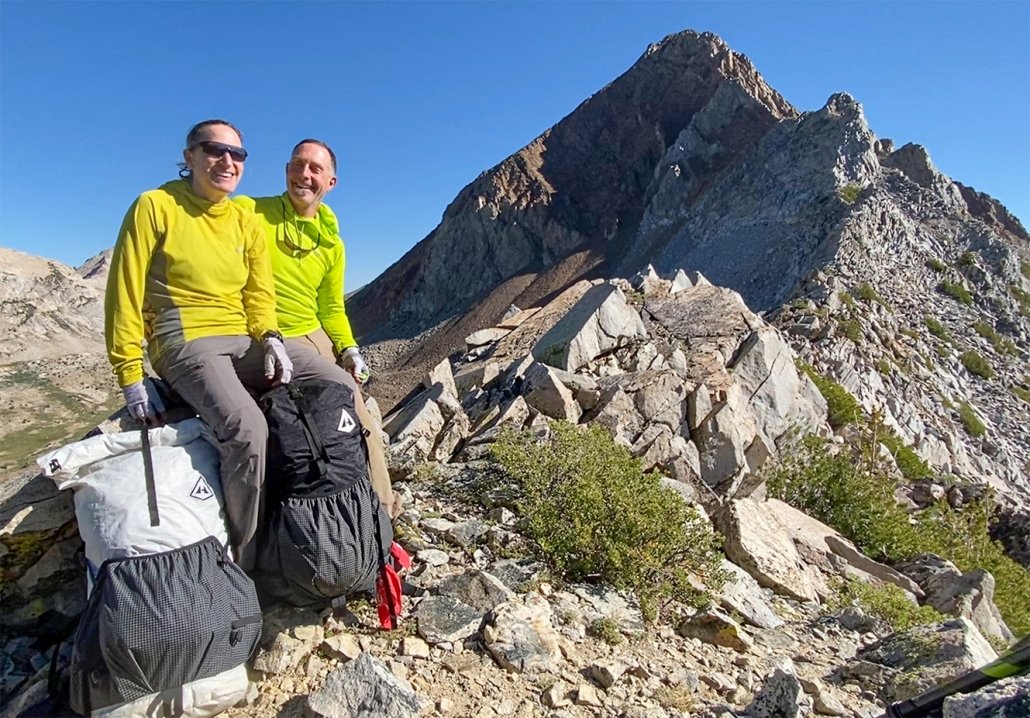
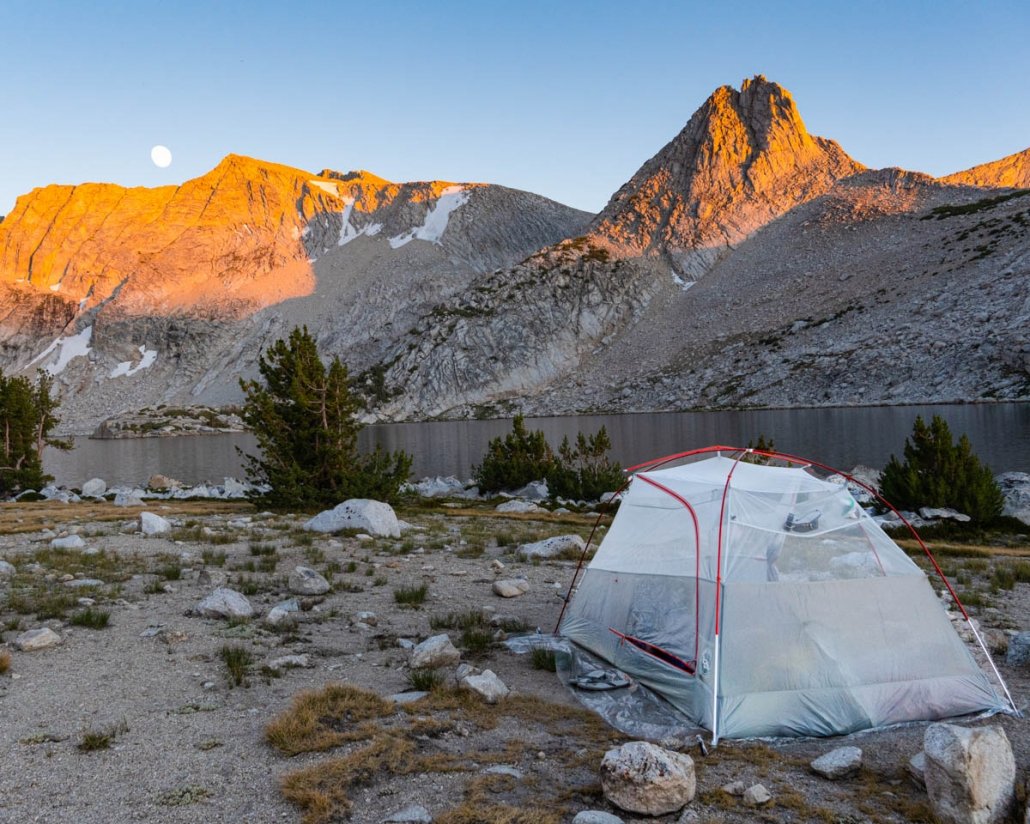
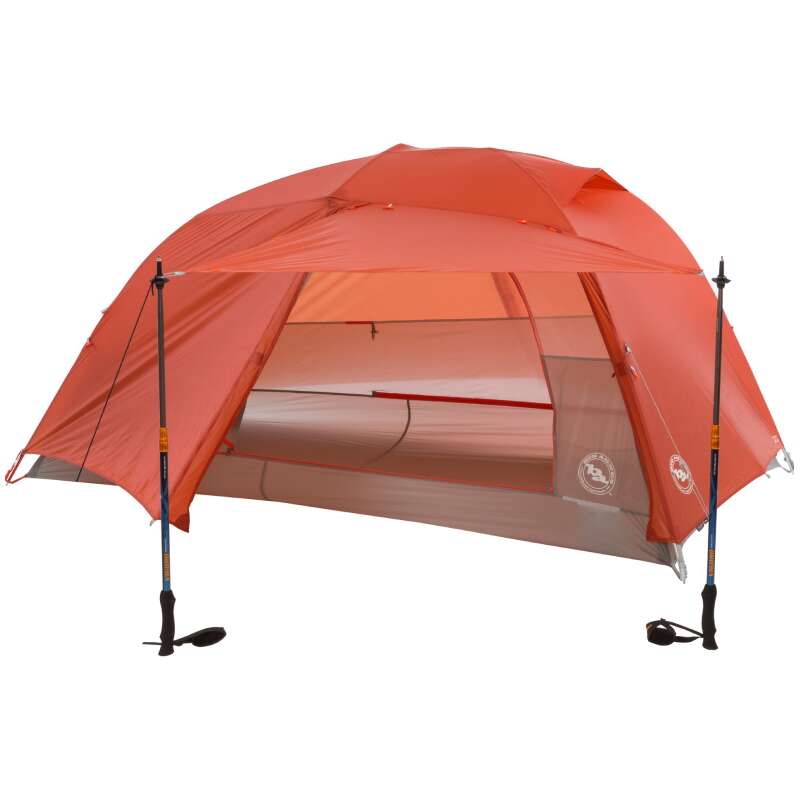
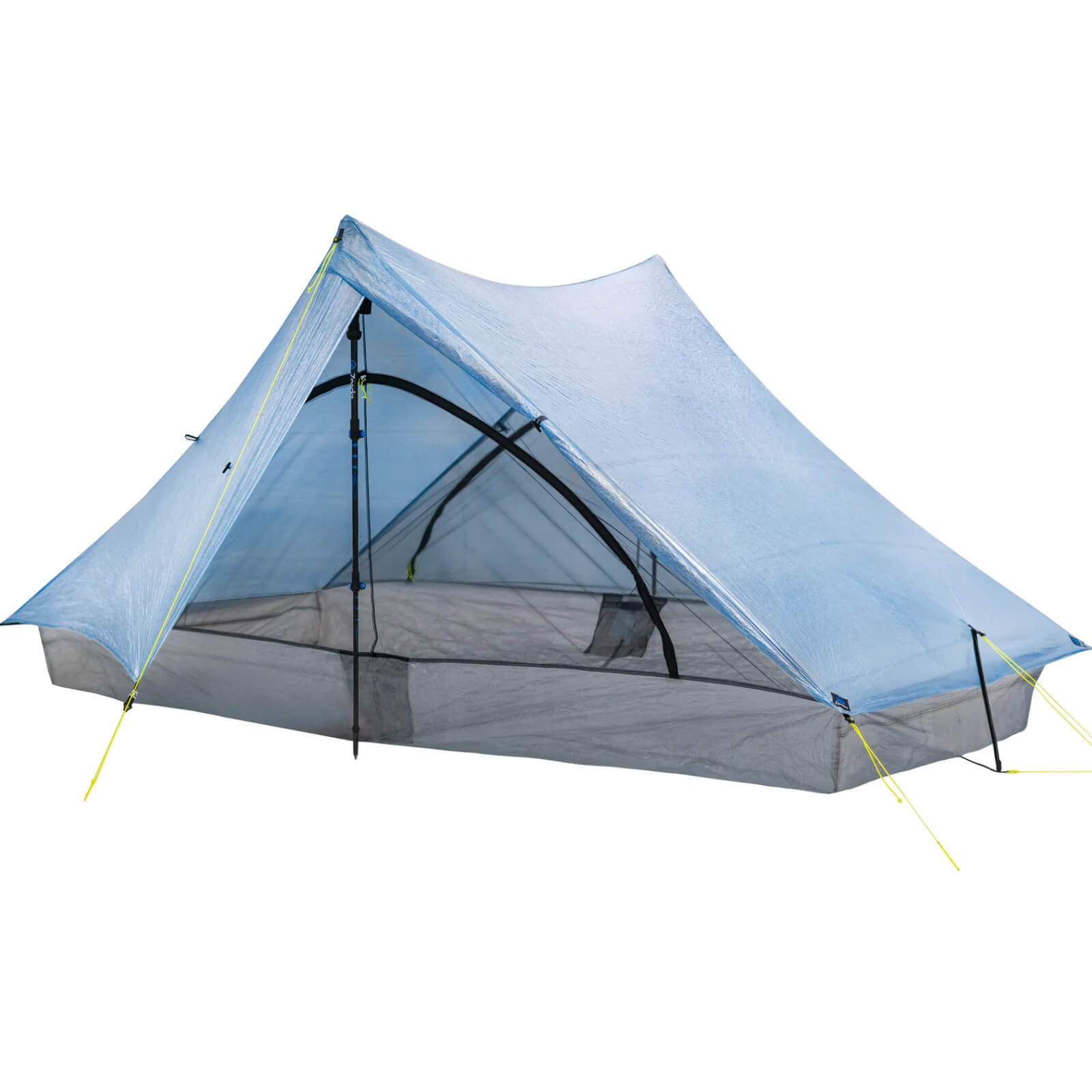
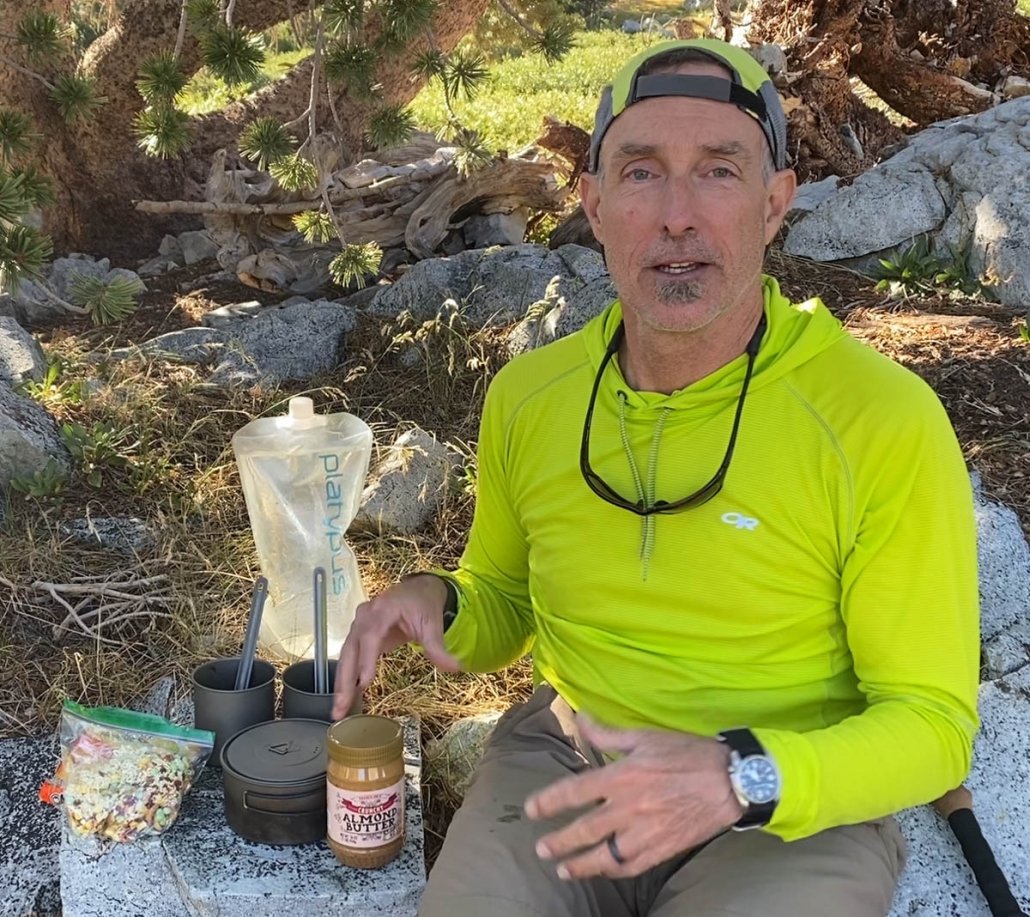
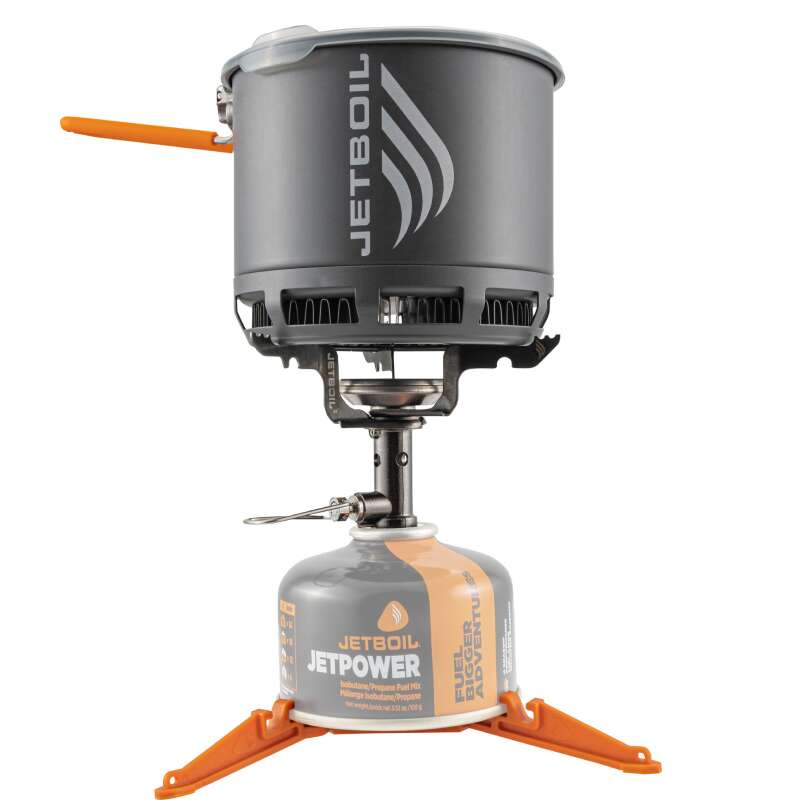
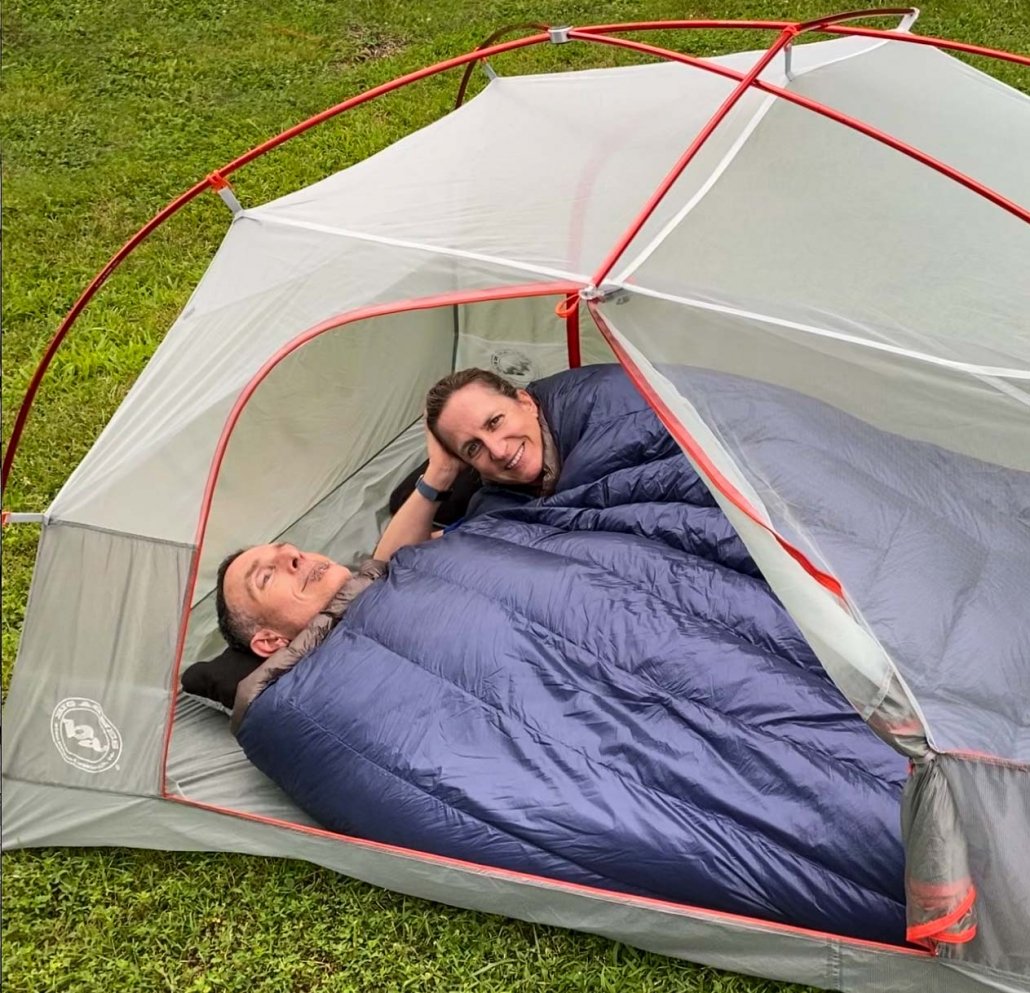
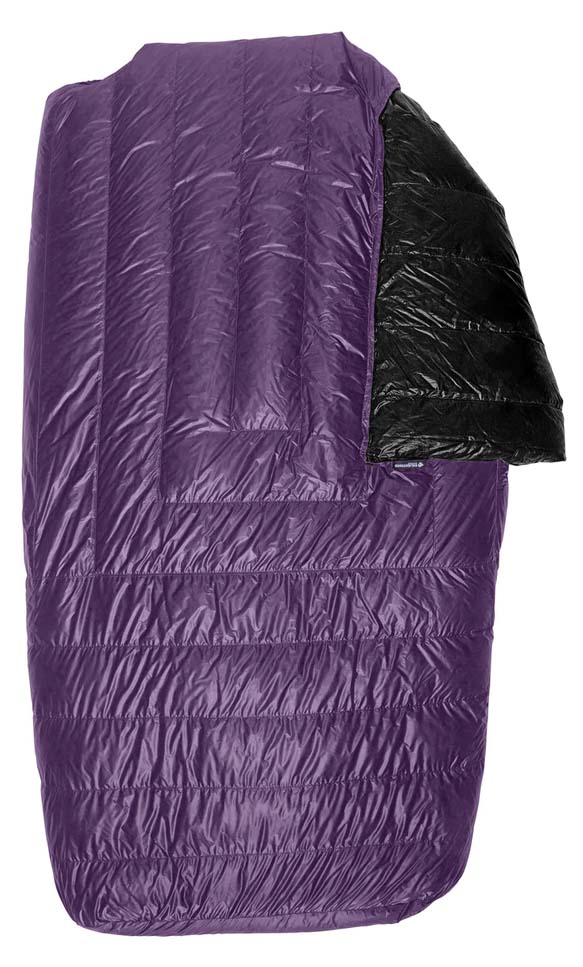
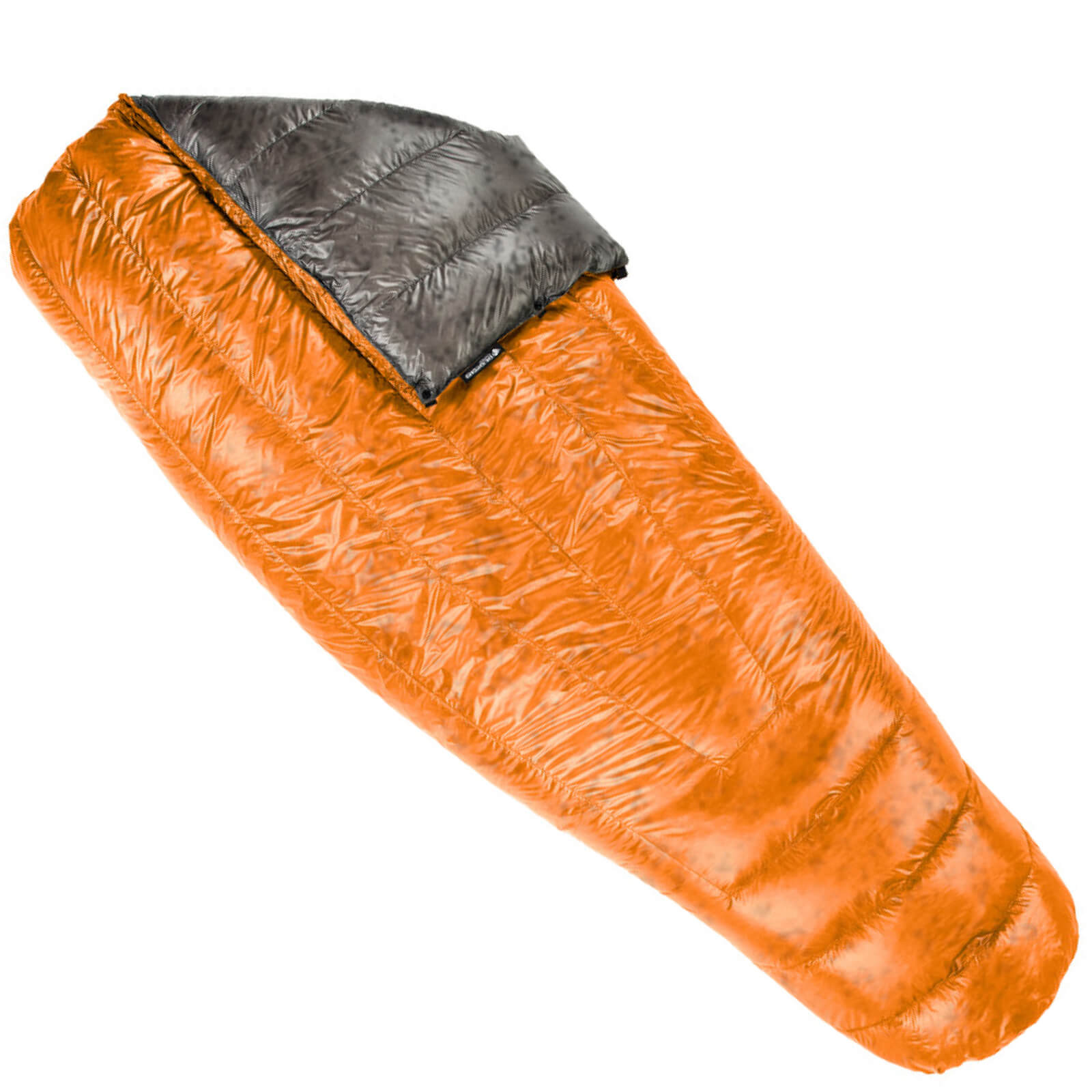
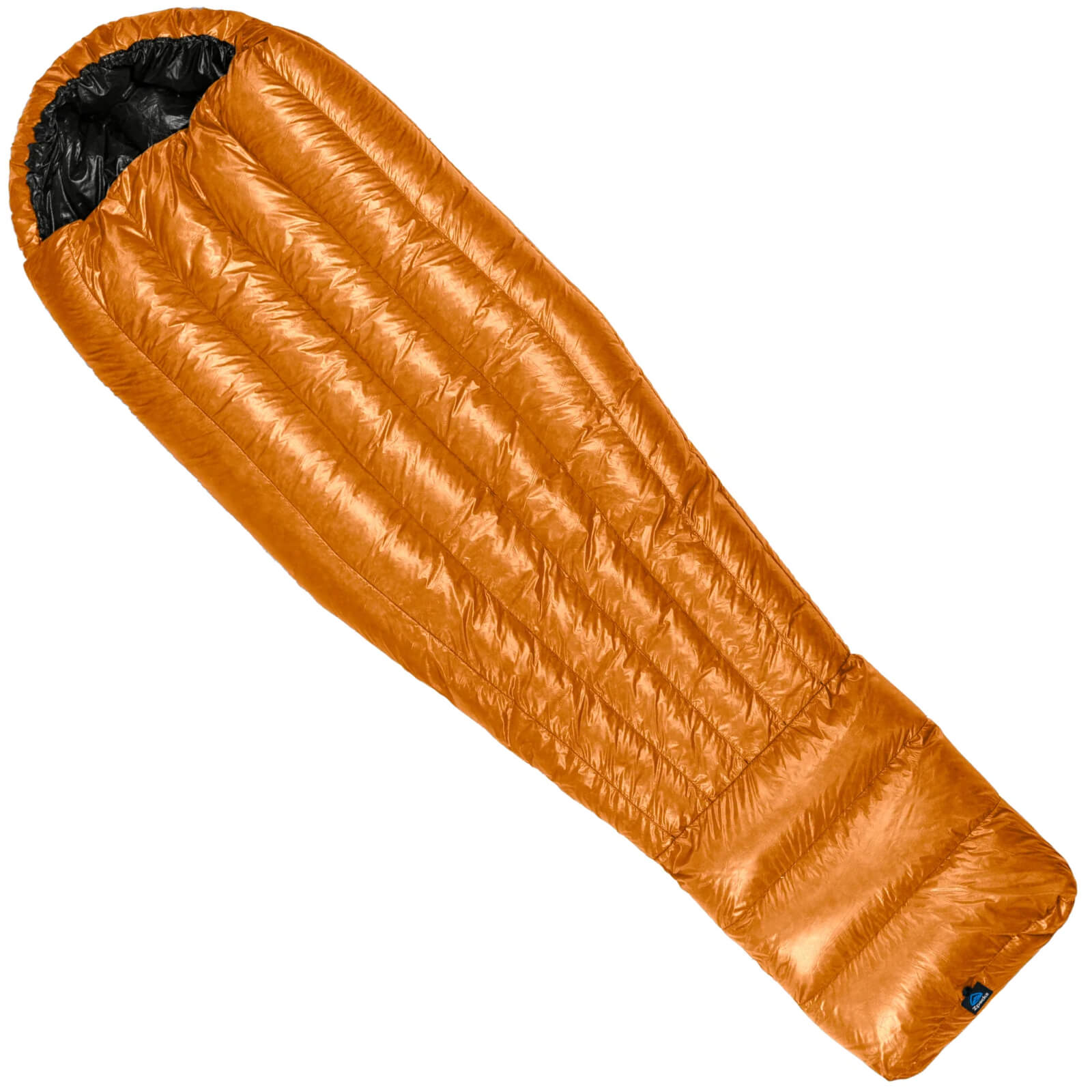
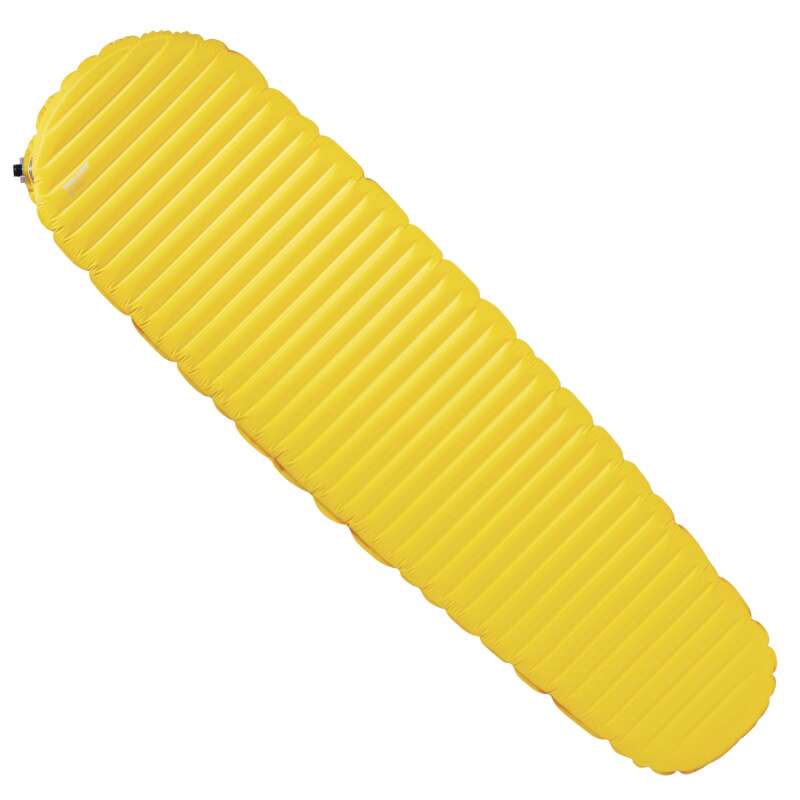


Big Al… tell me more about these “1oz camp shoes”!!!
Love the content, thank you for all the expertise and knowledge sharing.
Side note… we would love to get more Allison perspective!
Chet, sadly not longer in production and nothing like it anywhere that I can find. I am currently reviewing some 1 oz campshoes from Mayfly but have not come to a solid conclusion on them. Best, -alan
Alan… I just picked up a pair of these and I’ve wearing them around and I’m impressed. https://www.amazon.com/gp/product/B07BTKFYMF/ref=ppx_yo_dt_b_asin_title_o03_s01?ie=UTF8&psc=1
I took out the insole(s) and they are down to 6oz per pair and only $13! not bad and theyre a little beefier then some of the other offerings. Those Mayfly’s look delicate.
Safe trails :)
When I click on the link for the 2P Accomplice Quilt… it doesn’t SAY 2 person. Trying to make sure I get the right one. Is that the only type?
Yes, this is the two person version, thus the “Accomplice” name. Warmest, -alan
Ftr my wife and I LOVE our Accomplice. Car camping we use with the Exped Megamat Duo; backpacking we use with their hyperlight Synmat Duo. Backcountry snuggling == life at its finest!
Yup Aaron, the best to snuggle with the one you love! Warmest, -alan & alison
It’s hard to believe that the Xmid 2P doesn’t make the cut.
Jay, was just this trip. We actually used the X-Mid 2P in Alaska this year. Durston X-Mid 2P Tent Review. It’s a great 2-person tent for skilled backpackers. Best, -alan